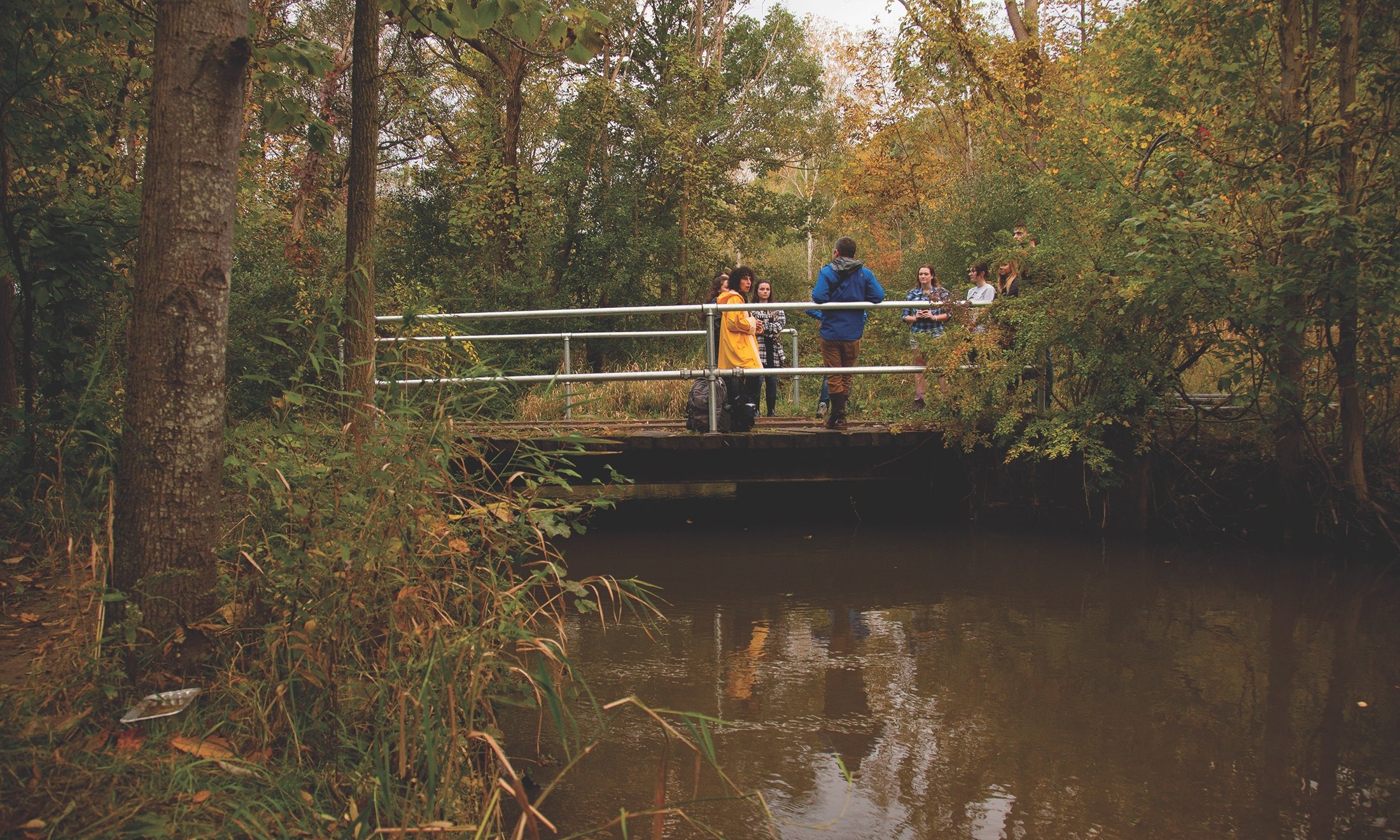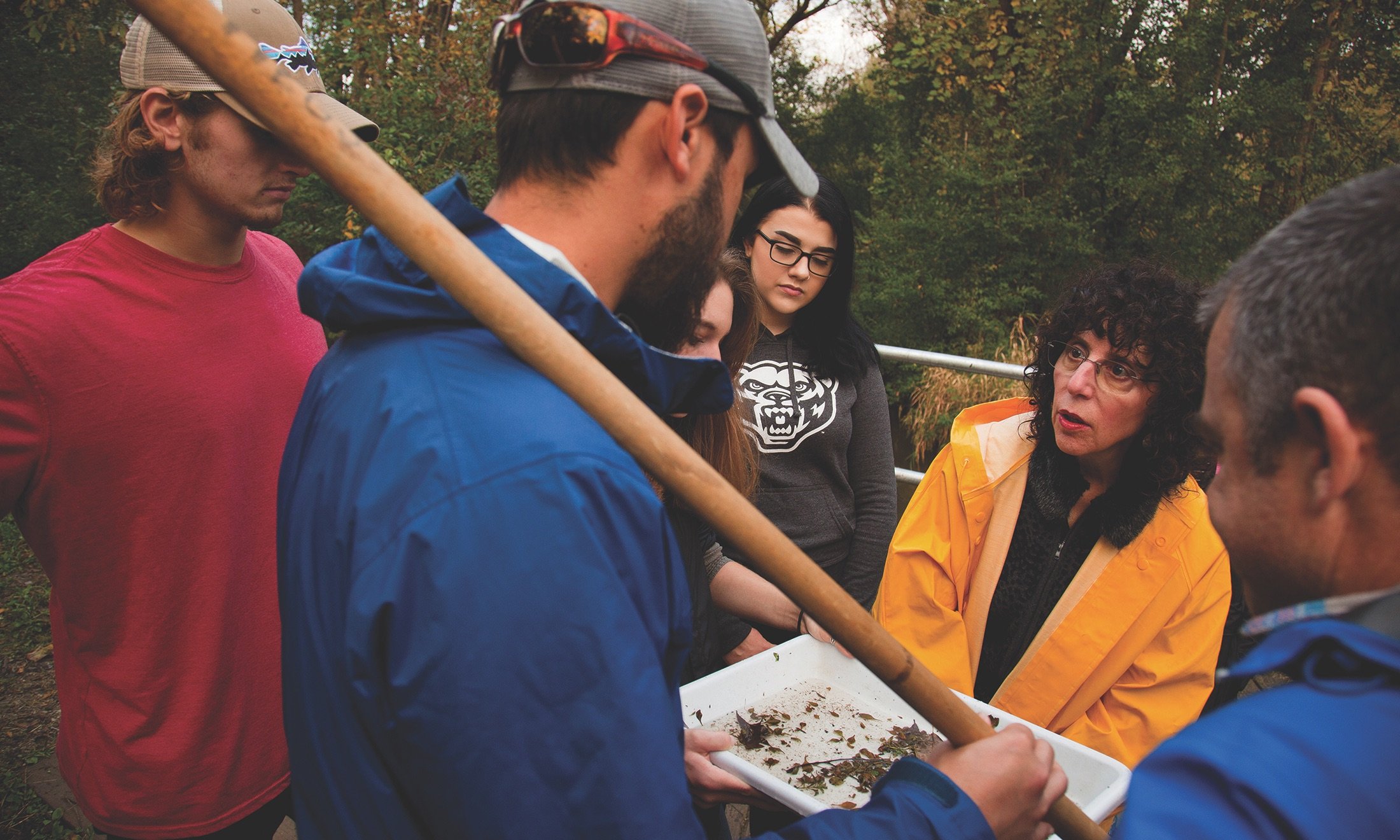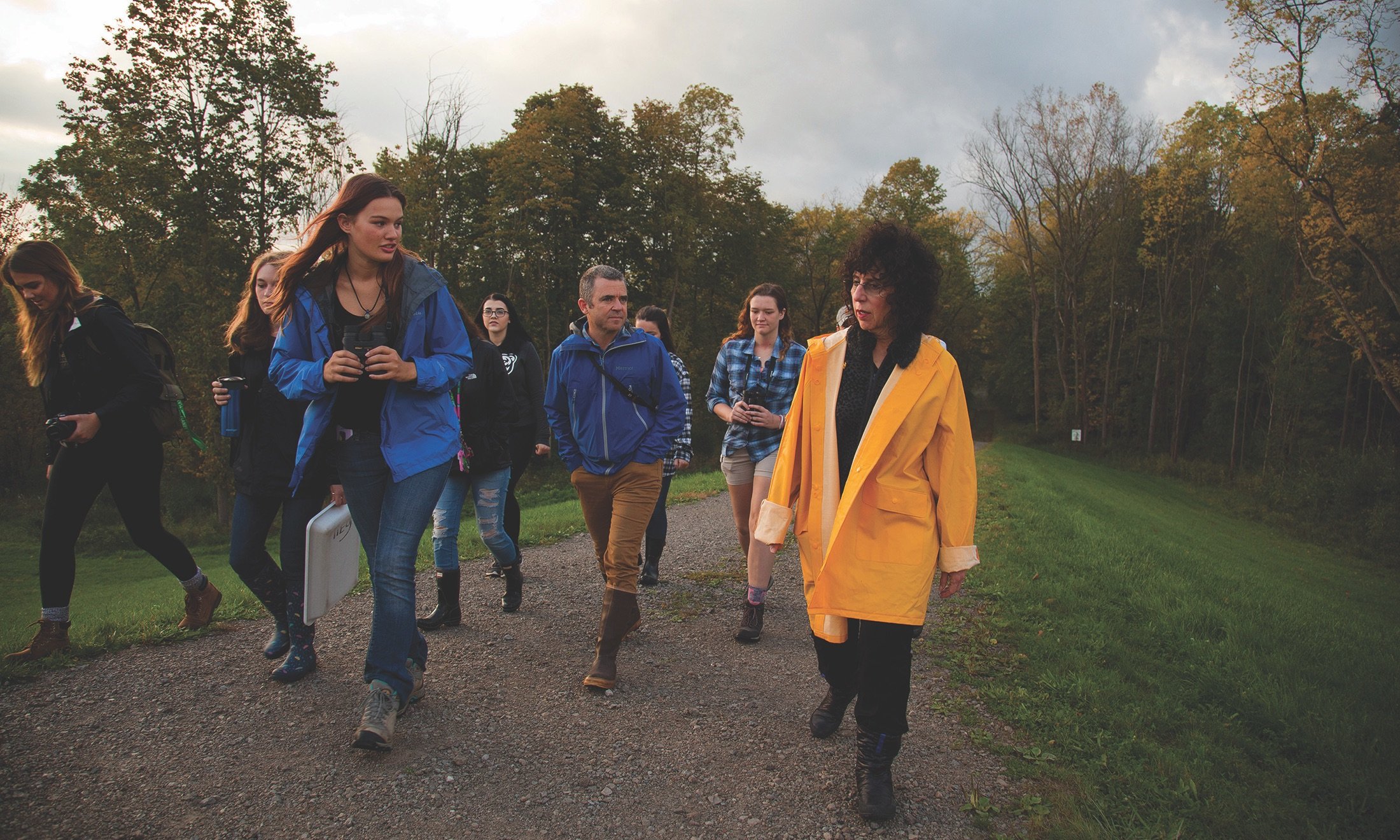Environmental Value

President Pescovitz recently toured the preserves, specifically Galloway Creek (shown here), with a group of undergraduate and graduate biology students

President Pescovitz recently toured the preserves, specifically Galloway Creek (shown here), with a group of undergraduate and graduate biology students

President Pescovitz recently toured the preserves, specifically Galloway Creek (shown here), with a group of undergraduate and graduate biology students
Covering approximately 110 acres, the Western and Eastern biological preserves on Oakland University’s campus don’t just add to the overall campus aesthetic. The two preserves contain forests, meadows, streams and wetlands and are of great importance to OU because of their academic and environmental value. “There are few educational experiences that are more powerful and transformative than hands-on fieldwork. At OU, students have the ability to participate in fieldwork on campus on a daily basis.” said Scott Tiegs, Ph.D., associate professor of biological sciences. “We did a headcount a few years back and about 1,000 students use the natural areas on campus as part of their coursework each year. They often come to OU because here they have the opportunity to incorporate our wetlands, our streams and our forests into their curriculum.”
Since 1980, more than 40 publications in international, scientific journals have resulted from research conducted in the University Preserves. Almost all of these publications have been coauthored with Oakland University students, many of whom have been undergraduates. These publications have ranged from studies of oak forest succession and investigations of fresh water invertebrates to research on the behavior of social insects. Tiegs, his colleagues and students want to make it clear that although it is easy to focus only on the beauty and benefit of these lands, it is important to also address the threats to these important campus resources.
“Nature preserves like these cannot just be left alone and stay healthy in urbanize settings, such as those on and around campus, where there are environmental stressors that need to be abated,” said Tiegs. “The introduction of invasive species, the runoff of fertilizer and pesticides from lawns, and light pollution are just a few stressors on a long list, and it’s important to address them in order to keep our ecosystems healthy.” Although the primary use of the University Preserves is for teaching and research, they are open to the Oakland University community and public for hiking, bird watching and nature study.
For more information about biological preserves at Oakland University, visit oakland.edu/biology.


 December 11, 2018
December 11, 2018

